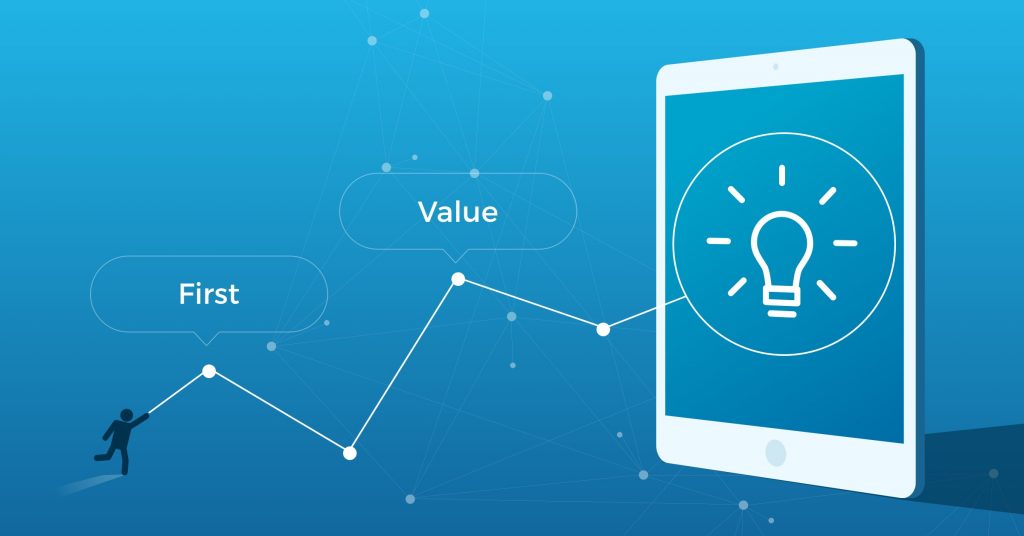
How do you define the onboarding process? What is the last step of the onboarding process (Onboarded)?
The onboarding process and, more specifically, the last step of the onboarding process have been deemed by many companies as difficult – but imperative – to define. Here at InnerTrends, we couldn’t agree more. Yes, the onboarding process and its last step are essential to define, but we want to make this an easy feat, rather than a difficult one.
With the use of our framework, it can be.
But let’s not get ahead of ourselves.
In order to answer these important questions, we must first develop an understanding of the foundation of onboarding.
Let’s start here:
What Is The Onboarding Process?
Some define the onboarding process as a process to identify the first value of a product.
Others define the onboarding process as the identifying of the epiphany moment – the “wow!” or “aha!” moment – but when described as such, we soon realize that defining a “wow!” or “aha!” moment is not that simple.
So what is the epiphany or first value moment? And if it is so difficult to define, where do we even begin when trying to identify this moment?
The Framework
Our framework defines the onboarding process as the moment from which the user creates their account with your product or app, to the moment when the promise of your product or app is delivered to them for the first time.
This promise is the value that your product or app can deliver to him or her.
The beauty of this framework is that the promise of every product is very easy to find.
The promise rests on the homepage of your product or app. It is the biggest heading on the homepage, and it is this heading that is the most direct attempt at convincing a user to create an account.
With that being said, here is an outline of the typical flow people go through when they discover your product:
- The user lands on your product or app.
- The user sees your promise in the biggest heading of the homepage.
- The user absorbs the content and material that is trying to convince them that your product or app is the best choice to deliver him or her that promise.
- The user is convinced, and creates an account.
- The onboarding process is complete when the user experiences the value of your promise for the first time.
Now that the user has been onboarded, we know that they have a very clear and informed understanding of how your product or app works as a result of their own, personal experience – not from marketing materials or preconceived notions – and understands the value that it can deliver to him or her.
So what is your product or app promising to its users?
Let’s take a look at some examples:
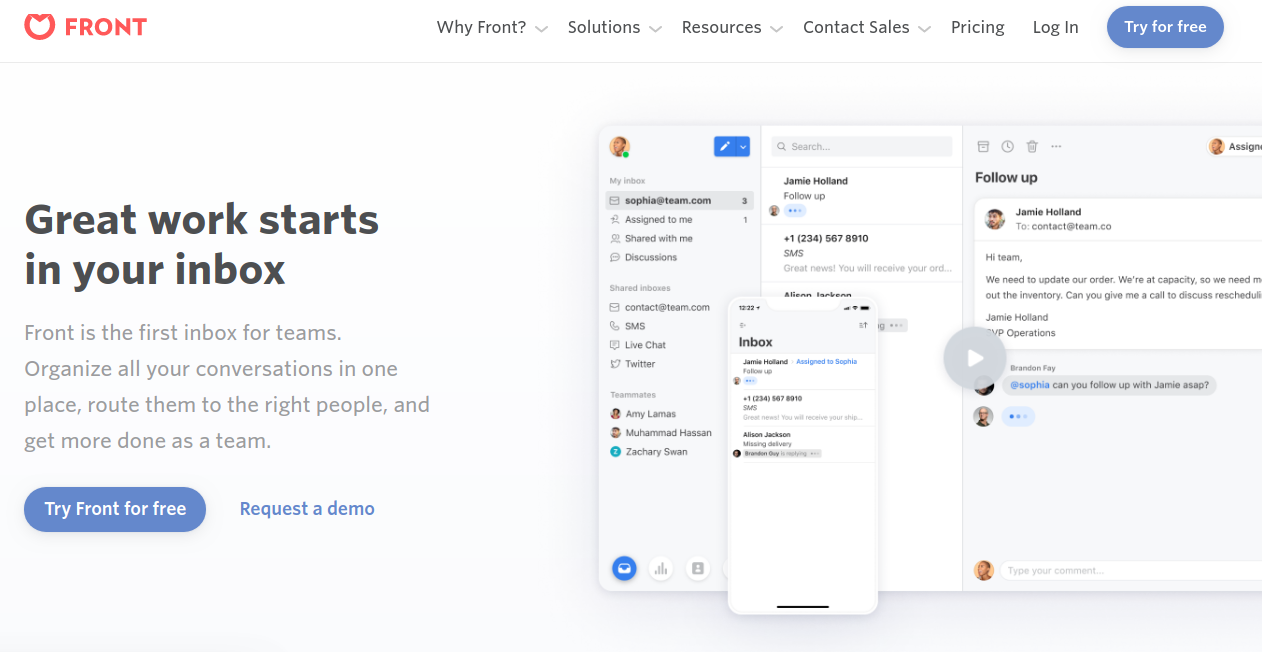
Front is built to simplify the organization of conversations amongst customer success or customer support teams.
Front’s promise: A singular, collective inbox for customer success or support teams to organize all of their conversations with customers in one place.
So how does the onboarding process flow for Front users? And where do users experience Front’s promise for the first time?
The process begins with the user creating an account. In order to experience the fulfillment of Front’s promise, the user needs to create an inbox, invite at least one or more team member into the inbox, and collaborate with that team member on a ticket. Only then will the user truly understand the power of Front’s platform.
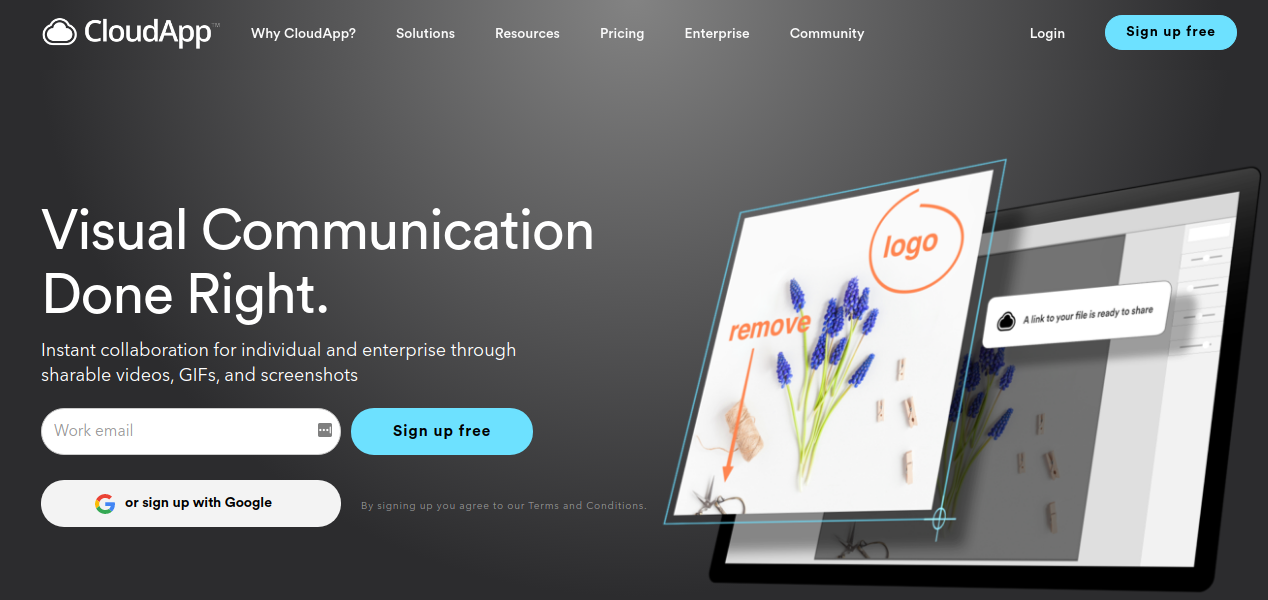
CloudApp is an all-in-one screen recording software where you can capture and embed HD video, screen recordings, GIFs, screencasts, screenshots and marked up images throughout business workflows.
CloudApp’s promise: A space where individuals or teams can annotate and discuss shared images or screencasts.
The user will truly understand the power of CloudApp’s platform when they upload an image and share it with at least one colleague to receive feedback on the image.
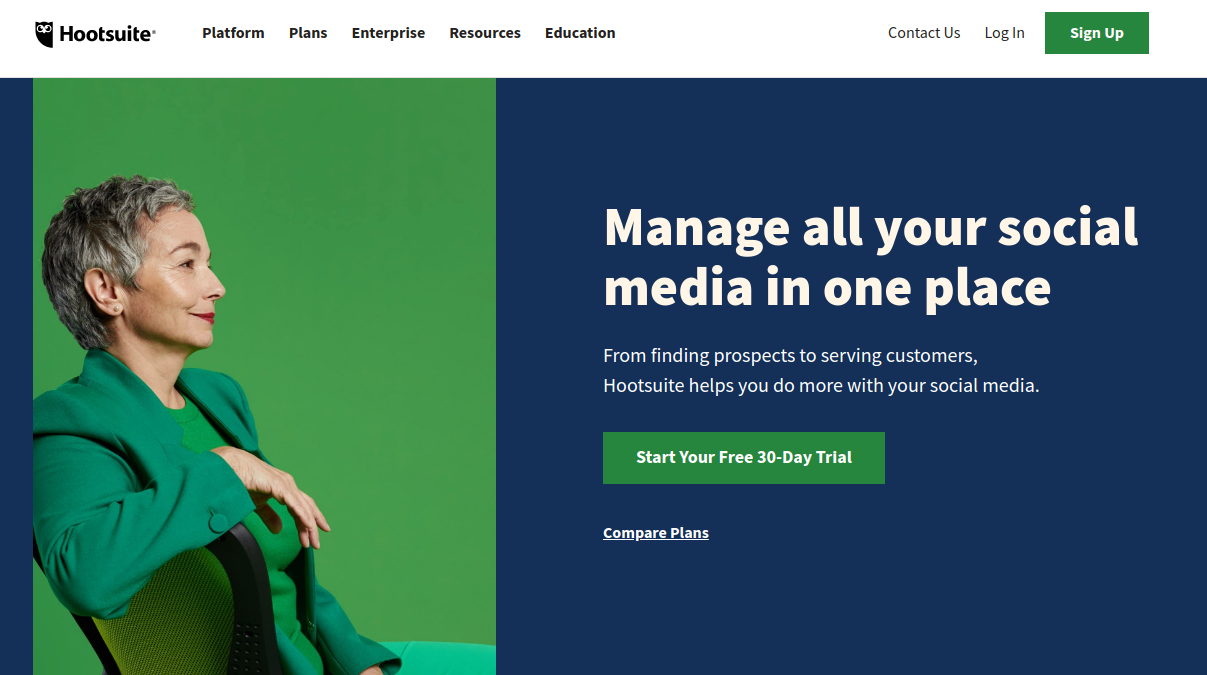
Hootsuite is a social media management platform.
Hootsuite’s promise: A singular place where the user can manage all of their social media.
The user will not be able to receive the value of Hootsuite’s platform until they link at least one social media channel to their Hootsuite account, and interact with at least one of their own posts.
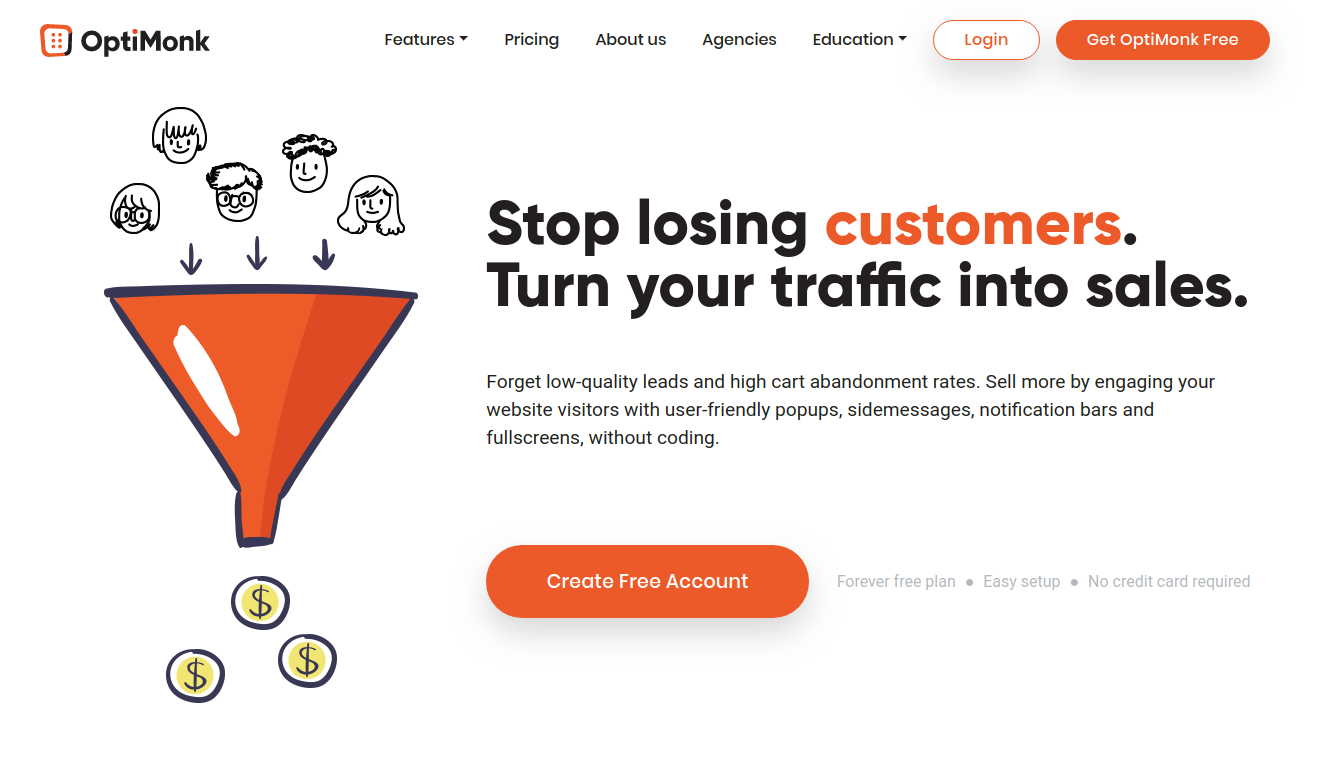
OptiMonk is a platform that delivers user-friendly pop-ups and notification bars to retrieve the contact details of visitors when they enter a website.
OptiMonk’s promise: To generate leads and sales from the existing traffic.
The OptiMonk user sees this promise carried out when they create an account, generate a campaign to collect leads, and finally, collect their first lead. When they have collected their first lead, the user not only understands how the program works, but the value that OptiMonk is delivering to them, and the onboarding process is complete.
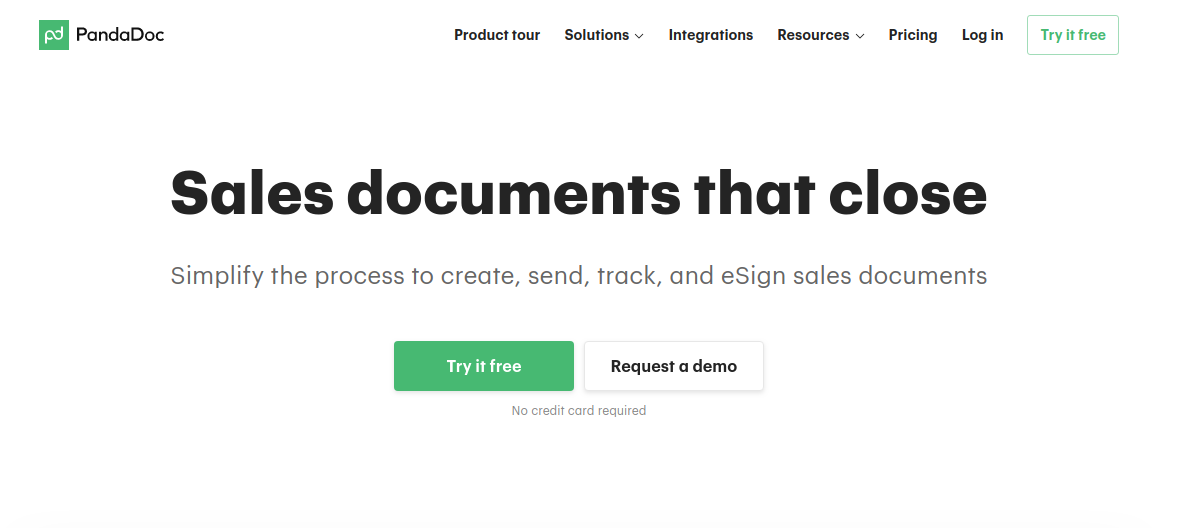
PandaDoc simplifies the process of creating, sending, tracking, and e-signing sales documents.
PandaDoc’s promise: To facilitate the closure of sales documents.
For the user to obtain that promise, they need to create an account, upload a sales document, send it to someone – as a test, perhaps they send the sales document to a friend or colleague at their office – and see the receiver interact with that document.
When this interaction has occurred, the user understands the worth of PandaDoc and the gratification of PandaDoc’s promise, and the user has been successfully onboarded.

Teamwork’s promise: Users will be enabled to work together, beautifully.
While this is a beautiful promise, it is not very concise or specific in terms of what this promise is going to deliver.
This is what we call an implicit promise. As Teamwork enables teams to collaborate on tasks, their promise is delivered when two or more people manage to complete a task that was created and managed through Teamwork, together.
That is also when the user can judge for themselves if Teamwork’s promise was “beautifully” delivered or not.
Onboarding > Retention > Revenue
So why is it so important to have a clear understanding of the onboarding process?
If the onboarding process isn’t utilized correctly, you may establish an unsuccessful set up for encouraging users to upgrade to a long-term, paid plan.
A person that does not finish the onboarding process is someone who does not know the value that the product or app is delivering to them, and therefore has no reason to continue using the product or app.
It is important to note that the retention rate of people that do not finish the onboarding process typically goes to zero after one or two weeks. And that is one way that, if you have set up the on boarding process correctly, you can validate the long-term use of your app or product.
If people that did not finish the onboarding process had a retention rate higher than zero by the second or third week, it means that those people received value from your product by using it in an alternative way compared with the way you may have thought about or intended for its use, which is important to consider.
When Is Your Promise Fulfilled?
In order to identify the end of your product or app’s onboarding process, evaluate and identify when your users are going to experience the value of what you are promising them when they decide to create an account with your product or app for the first time.
In fact, I encourage you to put yourself in the shoes of your users; visit the homepage of your product or app, and assess the outline of the flow that your users go through when they discover your site. Identify these steps using the framework we’ve discussed above, and discover the exact moment when your promise has been fulfilled.
In the comments below, let us know what you find.
Need some help?
Schedule a free consultation call with a data analyst here at InnerTrends, and we’ll have a successful onboarding process established for you in no time.
{{cta(‘4dacf605-6baa-42ac-87fe-06581ab0c6db’,’justifycenter’)}}